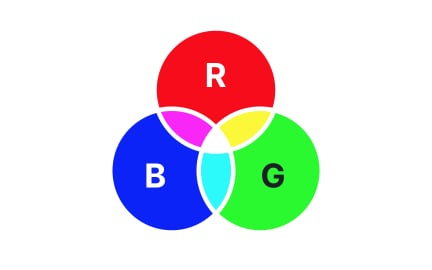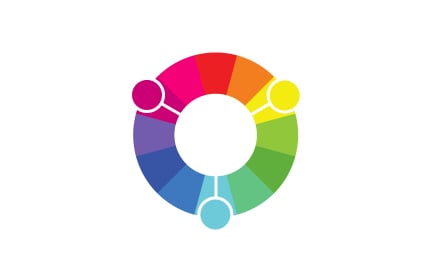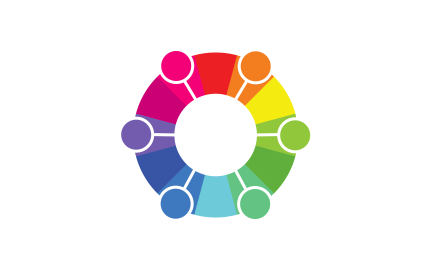Saturation
Saturation in design and color theory refers to the intensity or purity of a color. It affects mood, hierarchy, and visual clarity in UI and branding.

TL;DR
- Defines the intensity of a color.
- High saturation = vivid, strong hues.
- Low saturation = muted, grayish tones.
- Affects mood, emphasis, and readability.
Definition
Saturation is the measure of a color’s intensity or purity, describing how vivid or dull it appears, and is a core property in color theory for design and visual communication.
Detailed Overview
Saturation is one of the three key attributes of color, alongside hue and brightness. It defines how strong, vivid, or pure a color appears. A highly saturated red appears bold and striking, while a desaturated red shifts toward gray, feeling softer and less dominant. Designers manipulate saturation to balance emphasis, contrast, and harmony in visual compositions.
A frequent question is how saturation impacts user perception. High-saturation colors attract attention and convey energy or urgency, making them effective for calls-to-action such as buttons or alerts. Low-saturation colors, by contrast, create subtlety, calmness, and background balance, often used for secondary elements. Understanding this dynamic allows designers to guide user focus deliberately.
Another common query relates to accessibility. Overly saturated color schemes can cause visual strain, especially when combined with poor contrast. Similarly, very low saturation without sufficient distinction may reduce readability. Designers must balance saturation with contrast ratios to ensure inclusivity and usability for all audiences.
Teams also ask how saturation fits into brand identity. A brand might rely on bold, saturated colors to project confidence and energy, while another may prefer muted tones for elegance or professionalism. Maintaining consistent saturation levels across touchpoints strengthens recognition and communicates the brand personality effectively.
Another important aspect is saturation in digital displays. Because screen technologies vary, the same color may appear more or less saturated across devices. Designers often test colors across multiple screens to ensure consistency. Tools that simulate different environments or color-blind views help ensure that saturation choices work universally.
Finally, saturation plays a role in emotional design. Designers strategically adjust saturation to evoke feelings: bright, saturated palettes suggest playfulness and excitement, while muted, desaturated tones communicate calmness or seriousness. This emotional layer reinforces product goals, whether driving engagement, focus, or trust.
Learn more about this in the Saturation Exercise, taken from the Color Properties Lesson, a part of the UX Design Foundations Course.
Hue defines the base color, such as red, blue, or green. Brightness describes how light or dark the color appears. Saturation, however, describes the intensity or purity of that hue. A red can remain the same hue while appearing vivid at high saturation or muted at low saturation.
Understanding this distinction allows designers to manipulate visual emphasis with precision.
High-saturation colors are best for attracting attention, such as highlighting calls-to-action, urgent alerts, or key features. Their vividness makes them stand out immediately within an interface.
That said, overusing saturated colors can overwhelm users. They work best in moderation, balanced by more neutral tones.
Low-saturation colors help create calm, balanced environments. They are often used for backgrounds, secondary content, or subtle visual hierarchy. This prevents interfaces from feeling overwhelming or distracting.
Muting colors also helps focus attention on key, more saturated elements that require action.
Accessibility requires careful control of saturation to ensure visibility and comfort. Overly saturated palettes can cause eye strain, while undersaturated colors may blend into backgrounds. Designers must check contrast ratios and test color choices under different conditions.
Accessible use of saturation ensures clarity for users with vision impairments and creates universally usable interfaces.
Different screens display colors differently based on calibration, brightness settings, and technology. A highly saturated color on one monitor may appear muted on another.
Testing across devices and using standardized design systems helps maintain visual consistency, ensuring intended experiences reach all users.
Recommended resources
Courses

UX Design Foundations

Design Terminology











